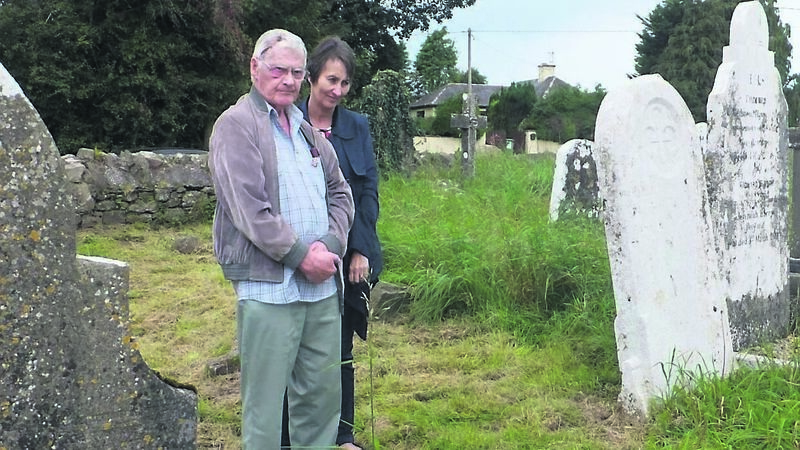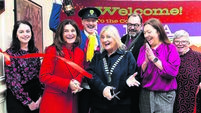Dick’s ashes brought home to Cork, to be scattered by his parents’ graves

The Liberator was heading home to Derrynane in Kerry shortly after the passing of the Catholic Emancipation Act in the English House of Commons.
The stonebreaker enquired as to what way the change in the legislation might effect his life. O’Connell is supposed to have answered: ’Tis all the same to you, my good man, you’ll still be breaking stones.”
On Monday morning last, that little anecdote came to my mind as I made a little pile of stones by the roadside on the way from Bartlemy village to the School Cross.
In times past, a horse and butt load of red sandstone rock would be dumped on that very same spot a few times a year. Then, sitting on his súgán chair, the stone-breaker would take each sandstone piece in his hand and, using a tiny iron hammer, he’d reduce that rock to small fragments. These pieces would then be used to what they called ‘sheet the road’, then earthen sods placed on top, and - hey presto - that was the ‘new road’!
When the job was given to a road contractor, it was up to him then to maintain that road in good condition for the next year.
Here, locally, the stone was quarried in Killamurren, Cronovan, and Ballinwillin. It was back-breaking work, but if one got a good ‘vein’ of rock it was easier to prise it from the quarry face. Then it had to be transported to little ‘depots’ by the roadside all over the parish.
Where I built the little ‘cairn’ on Monday morning was one such depot. When we were growing up there was only one house besides ours in the townland of Garryantaggart. That was Roches’ - at the top of our farm, just above the Path Field. Here Patrick, or Pad as he was better known, Roche, and his wife Kate reared their six children.
When the local National School children got their First Holy Communion in the church across the road, they would have been fasting since midnight, so after the Mass Mrs Roche would provide tea and bread and jam for the children. She died in Fermoy Hospital in 1966 aged 69.
The Roches’ only daughter Lizzie and her second son Paddy stayed in Ireland. Mikey, Johnny, Dan, and Dick went to England for work - like so many others from around here in the 1940s and ’50s.
We were always in and out of Roches’ home, and when the boys came home on holiday they’d always call down.
I was so lucky to have had some great chats and long conversations with Pad Roche in his old age. He worked as a road contractor so the tough task of stone-breaking was something he knew all about.
He told me he always wore goggles but little stone chips and dust still got into his eyes - so much so that in his eighties he was nearly blind.
He was born in 1888 and told me of his schooldays in the 1890s, all about Bartlemy Fair, times when the church would be packed out the doors for a Mission.
He remembered when there were three pubs and four shops in the village as well as a library, butter store and a band room - all gone now.
From his parents, Michael had heard about the Battle of Gortroe in 1834 and the Great Famine. He remembered the Land War, and when locals joined the British Army and fought in World War I - some came back from the trenches and enlisted with the IRA.
Pad Roche died in 1975 and was buried in Templeboden cemetery. Here in ‘the Roche ground’ were also buried Johnny and Jerry Roche of Ballyda and their relations and the ‘Hairy’/Connolly Roches from Ballyreidy. It is likely that all three families were connected back the generations.
To mark his 80th birthday in 2017, Dick Roche came back on holidays with his daughter Karen and other family members. By now the old Roche family home had been sold and incorporated into the new offices and headquarters of Bartlemy-based Media and Broadcasting Company TVM.
Dick was thrilled with his journey back down memory lane to the place he was born and to see the church, his old school, and the Holy Well, and meet people he had grown up with all those years ago.
It was a special visit for him, though tinged with sadness as he was then the ‘last man standing’ of the Roche family, born between 1919 and 1937.
He recalled working locally on farms when he finished national School - especially on the O’Connor farm in Ballyreidy where he provided ‘school transport’ for some of the family!
Dick Roche would have been 88 last Monday, September 15, so Karen and other family members thought it would be fitting to have his ashes brought back to where his life started.
So, to start the last journey we went to Knockmourne cemetery near Conna village. Here his mother was buried with her Moynihan and Golden relations - Kate Roche was a Moynihan and her mother was Eliza Golden.
The ancient, ivy-clad church there was destroyed in 1570 and again in 1641, but was a place of worship until the 1700s - interestingly, the Corporation of Waterford are the legal owners of this cemetery!
With the words ‘dust to dust and ashes to ashes’, the mortal remains of her youngest son were reunited with his mother.
On then to Templeboden cemetery in the parish of Lisgoold, where Pad Roche was buried 50 years ago.
The Roches - originally de la Roch - were a hugely prominent family in and around Fermoy, and many of the name still dwell by Bride and Blackwater.
Here, his ashes will mingle with the bones of generations of Dick Roche’s ancestors.
Back then to Bartlemy.
We stopped at ‘the heap ‘o stones’ where Pad Roche had toiled for many a day, month and year. As we stood in silence on that September afternoon, one could nearly hear the sound of stones being broken with a steady rhythm.
The last of the ashes of Dick Roche were scattered at the doorstep of the home where he first saw the light of day on Wednesday, September 15, in the year of Our Lord, 1937.







 App?
App?




